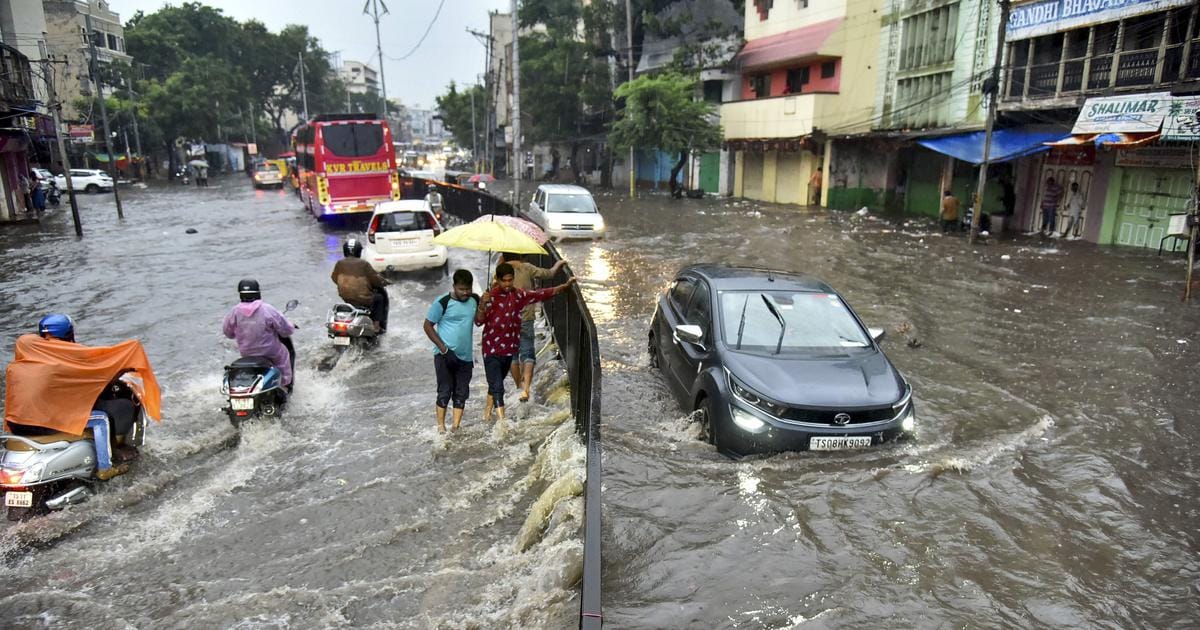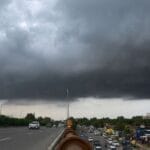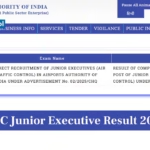The Indian monsoon has once again taken a dramatic turn. With torrential rain hammering the western coast, the India Meteorological Department (IMD) has issued Red Alerts across Maharashtra, Karnataka, and Goa. Backed by alarming data and real-time forecasting, this alert isn’t just a routine monsoon advisory—it’s a serious signal urging millions to stay cautious, especially in flood-prone zones.
This detailed blog unpacks the forecast, affected regions, risk zones, IMD recommendations, and essential safety tips for navigating this challenging weather event.
🔴 Why Are Red Alerts Issued?
The IMD issues Red Alerts when weather conditions are expected to turn extremely severe. In this case, the cause is extremely heavy rainfall, with daily accumulations expected to exceed 204 mm—a level that can overwhelm drainage systems, flood roads, and disrupt lives.
These conditions are being driven by an intensified monsoon surge, powered by coastal low-pressure systems over the Arabian Sea. The Red Alert is currently in effect for:
- Coastal Karnataka
- Konkan & Madhya Maharashtra
- Goa
These areas are also seeing strong surface winds, possible flash floods, and rapid rises in river water levels.
📍 Districts & Areas Under High Alert
Let’s break it down by state:
Maharashtra
- Konkan Region: Raigad, Ratnagiri, Sindhudurg
- Madhya Maharashtra: Pune, Satara, Kolhapur
These areas are witnessing consistent and extremely heavy rainfall, raising concerns for both urban flooding and landslides in hilly terrains.
Karnataka
- Coastal Belt: Udupi, Dakshina Kannada, Uttara Kannada
- Interior Karnataka: Heavy rain with lightning expected in northern and southern districts.
Landslides, tree falls, and waterlogging have already been reported in some zones.
Goa
- Entire state under Red Alert.
- North Goa and South Goa both face the risk of flash floods, especially in low-lying regions and near riverbanks.
🌦️ Today’s Weather Forecast: City-Wise Breakdown
Mumbai, Maharashtra
- Temperature: 28°C–29°C
- Forecast: Intermittent rain through the day, heavy spells during mid-afternoon and late night. Commuters advised caution due to waterlogging.
Bengaluru, Karnataka
- Temperature: 21°C–24°C
- Forecast: Thunderstorms expected between 1–2 pm, followed by overcast skies and steady rainfall into the evening.
Panaji, Goa
- Temperature: 25°C–27°C
- Forecast: Foggy morning with scattered showers expected from noon. Second wave of rain likely during the late evening hours.
🌊 Flash Flood Warning in Effect
The IMD has raised flash flood alerts in coastal Karnataka, Goa, and parts of Maharashtra’s Konkan belt.
What is Flash Flooding?
Flash floods occur when intense rainfall overwhelms the local drainage systems in a short span, leading to rapid and dangerous flooding.
Risk Zones:
- Low-lying neighborhoods
- Riverside areas
- Poorly drained urban zones
- Hilly or landslide-prone regions
🧰 How to Stay Safe – Emergency Tips
In the event of a flood or severe rain warning, here’s what you need to do:
- Avoid travel during heavy downpours, especially near river crossings or underpasses.
- Disconnect electrical appliances in water-logged areas.
- Do not walk or drive through flooded roads—just six inches of moving water can knock you off your feet.
- Keep an emergency kit: medicines, torchlight, batteries, drinking water, snacks, waterproof bag.
- Stay informed: Tune in to your local weather updates and district-level emergency announcements.
- Evacuate when advised: Cooperate with disaster response teams and move to higher ground if necessary.
📅 Rainfall Forecast for the Week Ahead
The heavy rainfall is not a one-day event. According to the IMD’s extended outlook:
- July 24–28: Continued intense rainfall expected over coastal Maharashtra, Goa, and Karnataka.
- Wind speeds: Up to 60 km/h are predicted along the western coastline.
- Sea conditions: Rough and turbulent. Fishermen are strongly advised not to venture into the Arabian Sea during this period.
🌪️ What’s Causing This Intense Monsoon?
Several climatic phenomena are behind the current weather pattern:
- Low-pressure systems forming rapidly in the eastern Arabian Sea.
- High moisture content due to prolonged southwest monsoon activity.
- Influence of larger climatic cycles, such as El Niño or La Niña, which often disturb regular rainfall distribution.
In past years, similar patterns led to disasters. For instance:
- 2019 Konkan Floods
- 2021 Cyclone Tauktae
This highlights how such alerts must be treated with seriousness and preparation.
🏛️ What the Authorities Are Doing
- Evacuation and rescue teams are on standby in the most vulnerable districts.
- Schools and public institutions may be temporarily closed.
- Traffic advisories have been issued—especially for inter-district highways prone to landslides.
- Power companies are monitoring vulnerable substations to avoid outages or electrical accidents.
Local government and disaster management teams are urging people to limit travel, avoid venturing outdoors unnecessarily, and stay updated through official channels only.
📱 Be Prepared: Personal Action Plan
Here are five proactive steps you can take:
| Step | Action |
|---|---|
| 1️⃣ | Sign up for IMD SMS alerts or check updates via mobile apps. |
| 2️⃣ | Follow your District Collector/DM social pages for hyperlocal instructions. |
| 3️⃣ | Avoid unnecessary travel, especially in low-lying areas or coastal zones. |
| 4️⃣ | Keep phones charged, with power banks handy. |
| 5️⃣ | Educate family members, especially elderly and kids, on emergency contact numbers and shelter locations. |
🧭 Final Takeaway: Stay Vigilant, Stay Safe
This isn’t just seasonal rain—it’s an emergency situation. Red Alerts and flash flood warnings are being issued for good reason. These are signs to:
- Pause your plans,
- Prepare your essentials,
- And protect your loved ones.
Whether you’re a daily commuter in Mumbai, a student in Bengaluru, or a tourist in Goa, the message is clear: be cautious, stay informed, and take immediate action when necessary.
Nature is unpredictable, but with timely alerts and responsible action, we can reduce its impact.










